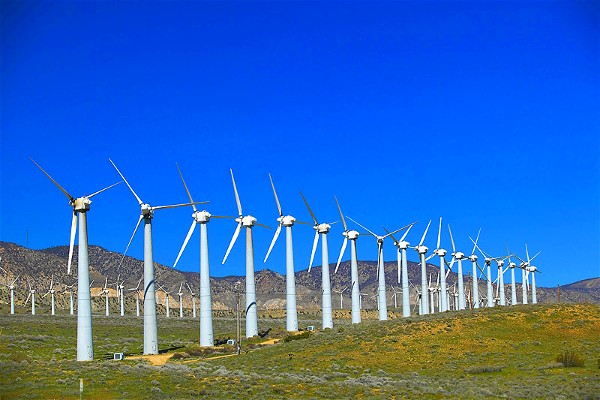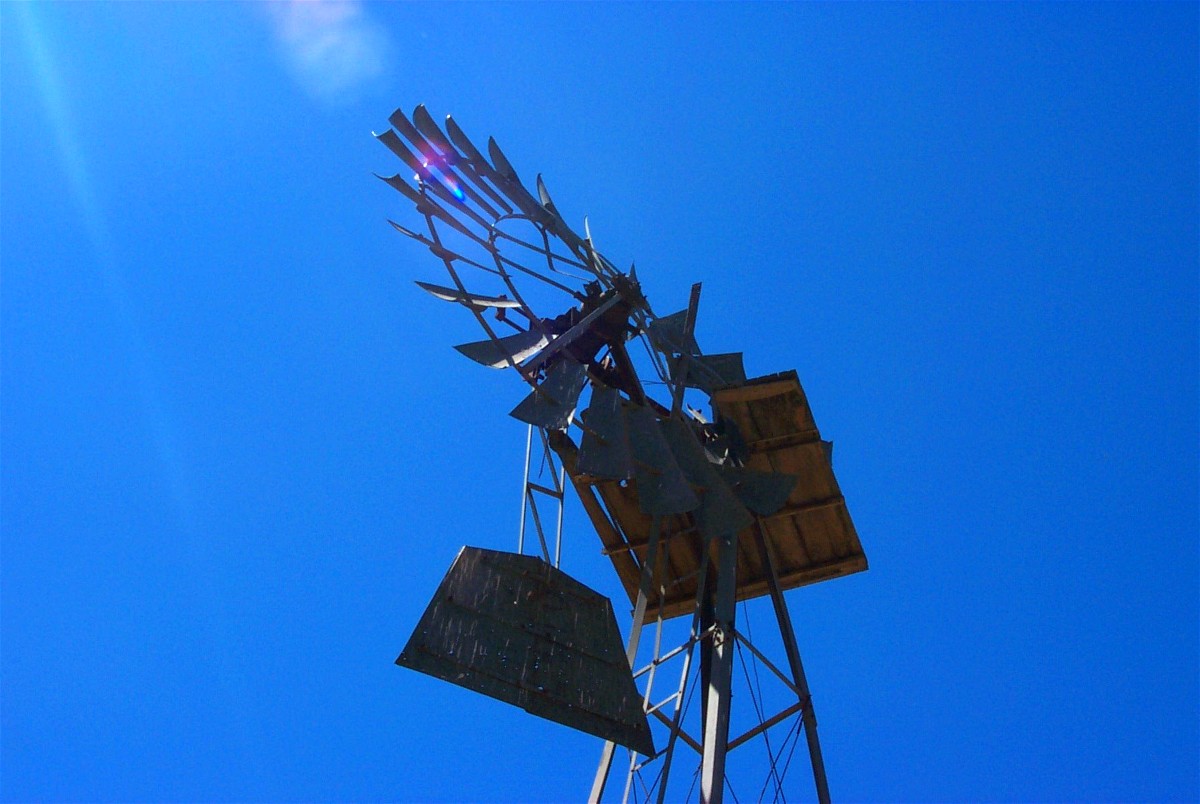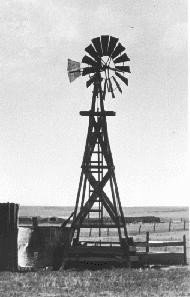 With the new administration in place, our nation is destined to embark on expanded efforts to develop alternative energy solutions using wind, solar, and geothermal resources in the decade to come. Over the next 25 years, world wide use of renewable energy is expected to increase by over 400%, many times the increase anticipated in the use of oil, natural gas, and coal. With the new administration in place, our nation is destined to embark on expanded efforts to develop alternative energy solutions using wind, solar, and geothermal resources in the decade to come. Over the next 25 years, world wide use of renewable energy is expected to increase by over 400%, many times the increase anticipated in the use of oil, natural gas, and coal.
While the broadest economic impact of alternative programs can be obtained when implemented through the energy grid of urban settings, independent alternative energy efforts made by individual rural property owners often become the proving ground for the various methodologies, and can have far reaching effects in setting precedents, while at the same time providing significant benefits to the rural property owner.
In this regard, the U.S. Department of Energy publishes a website titled “National Renewable Energy Laboratory” (www.NREL.gov). The site offers a quite a bit of information about renewal energy as it relates to rural property – farms and ranches and land. Our intention for Ranch & Country Magazine is to explore the alternative energy solutions that fall in the category of “renewable energy” in terms of how such energy sources relate to country living and the rural lifestyle.
Strictly speaking, “renewable energy” is a term used for energy that is produced from naturally occurring and inexhaustible resources. Sunlight is a prime example of renewable energy in that sunlight is not “used up” in the process of generating solar power. Renewable energy sources such as solar, geothermal, and wind power are pure renewables in that their sources are 100% naturally occurring and inexhaustible.
It is also a common practice to refer to hydropower and power derived from biomass as “renewable energy.” Hydropower is one of the oldest sources of energy and has been used in the U.S. since the late 19 th century. Because hydropower often involves the construction of a dam or some other means to harness and channel the flow of water, this type of renewable energy contracts to inexhaustible and uninterruptible nature of sun, wind, and geothermal energy sources. 
The term biomass typically refers to using organic remains, such as sawdust, excess straw, and other wastes, and/or fast growing plants, such as various grasses that can be replenished easily to produce energy. Biomass, unlike sun and wind, is, in the strictest definition of the term, an exhaustible resource; however, it is classified as renewable because the product used to produce energy is either waste or plant material that can easily be replaced.
Wind power is the world’s fastest growing energy source. According to Wikipedia, wind power is currently used to produce only about 1% of the electricity used world wide. However, some 6% of U.S. land is deemed sufficiently conducive for wind power generation to supply one and one half times the current electricity used in this entire country. Because of the vast wind resources of the Great Plains, some call the USA “the Saudi Arabia of Wind.”
Wind power is also use in Denmark, where roughly 19% of electricity used is produced by wind power. Other European nations who use wind power to produce electricity are Spain and Portugal, where 9% of electricity used is produced by wind power, and Germany and Ireland, where wind power accounts for 6% of electricity used.
The classic “windmill” still remains a fixture of the landscape throughout rural America, a reminder of our farming and ranching traditions. These nostalgic vestiges of our country’s renewable energy history were used to pump water and grind grain, and even as late as the 1920’s were used to generate electricity in rural areas that did not have electric service. The use of windmills in America dates back even further, to colonial times when they were used to grind wheat.
 The historic use of wind power and of the windmill goes back to earliest recorded history. Babylonian and Persion empires used windmills to grind grain, and there is some evidence that the Babylonians used wind power for irrigation. Various windmill designs were used throughout the Middle East to grind corn and draw water for centuries thereafter. Eventually trade with the Middle East brought the windmill concept to Europe. In the 11th century, the Dutch adopted and refined a windmill design that to this day is an emblem of Holland. The historic use of wind power and of the windmill goes back to earliest recorded history. Babylonian and Persion empires used windmills to grind grain, and there is some evidence that the Babylonians used wind power for irrigation. Various windmill designs were used throughout the Middle East to grind corn and draw water for centuries thereafter. Eventually trade with the Middle East brought the windmill concept to Europe. In the 11th century, the Dutch adopted and refined a windmill design that to this day is an emblem of Holland.
In this century, the windmill has been replaced by the towering wind turbine. These machines have been used in Denmark since the early 1900’s. The modern design of the wind turbine was developed in the 1980’s and is still under development. But the principle for all designs remains the same as that of the simple windmill: blades are moved by the blowing wind, which spins a shaft, and that spinning shaft is powerful. It can be connected to other instruments to grind things or turn things, and it can connect to a generator to make electricity.
Wind turbines can produce stand alone power, and they can also be connected to a utility grid or incorporated into a solar system. Single small turbines, below 100 kilowatts, are used for homes, telecommunications dishes, or water pumping. Small turbines are sometimes used in connection with diesel generators, batteries, and photovoltaic systems. These systems are called hybrid wind systems and are typically used in remote, off-grid locations, where a connection to the utility grid is not available.
Wind turbines designed to be connected to larger utility grids range in size from 100 kilowatts to as large as several megawatts. Such turbines are typically grouped together in larger good wind areas known as wind farms. Wind farms have been appearing throughout the U.S. for the last few decades. Yet a more recent trend is occurring in rural communities where farmers and ranchers are beginning to realize the benefits of wind power generation for individual and small community use.
The economic benefits for rural communities who develop their wind resources are significant, generating income which stays in the community. The National Rural Electric Cooperative Association, website www.nreca.org, lays out principles for setting up co-ops, a unique form of business to provide electrical service in rural areas. Also ranch owners with land to spare can benefit by receiving land lease payments from wind project developers.
The advantages to developing wind power for ranch and land owners are many. Wind is a clean fuel source and doesn’t pollute or produce waste products. There are no emissions from wind power. Wind power technologies can be relatively low cost, and the machines use only a small portion of the land. Wind power can be used in conjunction with other renewable energy systems such as solar systems. In some locations, the availability of wind and the availability of unfettered sunlight are in a direct inverse relationship to one another – or simply put, the wind tends to be the strongest when the sun isn’t shining, and the sunniest days have less wind.
Some of the primary disadvantages for installing wind turbines on farms and ranches include the initial cost of the machines. Also because wind in most locations is intermittent, consistent available power requires the wind machine be coupled with battery technology. There is also the possibility of noise from the rotating blades, and there is the visual impact that the wind turbine may have on the views and the aesthetics of the property.
Wind power, solar power and geothermal energy are the purest “renewable” energy resources. Next, learn about solar energy, geothermal energy and fuel cell technology - coming soon! |